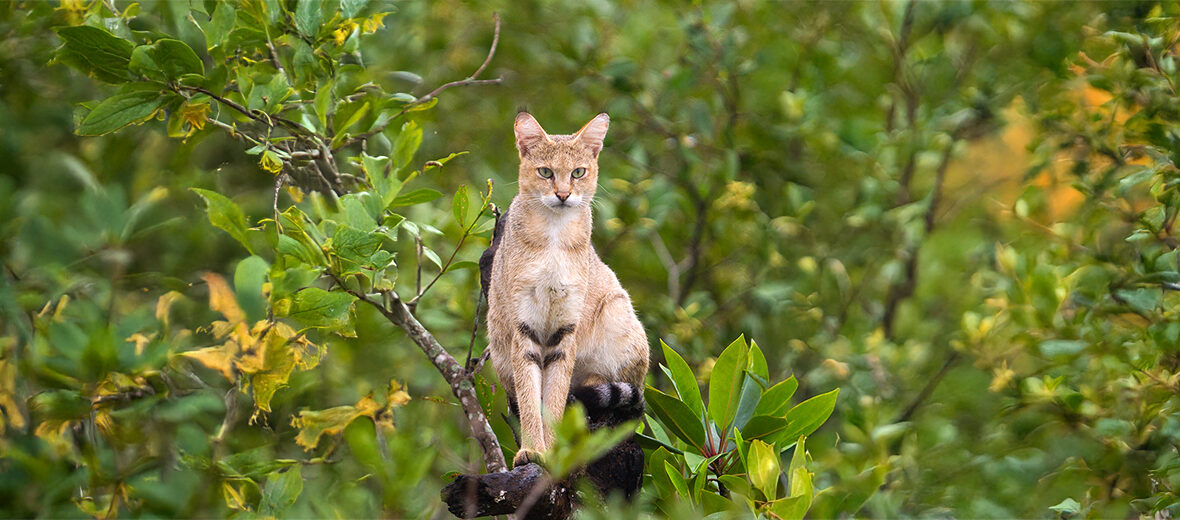
The jungle cat, aka reed cat or swamp cat, can be found from northeastern Africa, to the Middle East, and eastward to India and Southeast Asia. They face the threats of habitat loss at the hands of residential and commercial developments, farming, ranching, logging, and marine & freshwater aquaculture; hunting, for their meat and fur; trapping, to later be poisoned or sold on the black market as exotic pets; land pollution; and water pollution. However, these felines are abundant enough to be listed as Least Concern by the IUCN. Their populations are decreasing though.
First the Stats…
Scientific name: Felis chaus
Weight: Up to 35.3 lbs.
Length: Up to 30 inches, plus up to a 12 inch tail
Height: Up to 14 inches, at the shoulders
Lifespan: Up to 20 years
Now on to the Facts!
1.) Their ears measure up to 3.1 inches, and have a .59 inch black tuft at the tips.
2.) Like all other cats, sans lions, they are solitary and only come together to mate. Mothers are also seen with their kittens till they mature.
3.) Territories are maintained via urine spraying and scent marking.
4.) Rats, mice, moles, hares, fish, frogs, insects, snakes, and birds are all on the menu.
5.) They were first described by Johann Anton Güldenstädt in 1776.
But wait, there’s more on the jungle cat!
6.) While there is debate, there are between 3 – 10 subspecies recognized, based on who you talk to.
7.) Females undergo up to a 2 month gestation (pregnancy) that yields up to 6 kittens; although up to 3 is more common.
Did you know…?
Several jungle cat mummies were found among the cats in ancient Egypt.
8.) Being a habitat generalist, these cats dwell in habitats with adequate water and thick vegetation, like swamps, wetlands, littoral & riparian areas, grasslands, and shrublands.
9.) They are also common in agricultural lands, like bean and sugarcane fields, across their range, and have often been sighted close to human settlements.
10.) These cats are diurnal (active during the day).
But wait, there’s still more on the jungle cat!
11.) They often rest in burrows, grass thickets, and scrubs. They also sunbathe on colder winter days.
12.) These cats have been documented walking up to 3.1 miles in search of prey.
Did you know…?
They can jump up to 9.84 feet.
13.) Bears, crocodiles, dholes, fishing cats, golden jackals, leopards, large raptors, snakes, and tigers all prey on these felines.
14.) There has been no record of these cats in the Astrakhan Nature Reserve in the Volga Delta since the 1980s.
15.) In the 1970s, these cats used to be the most common wild cats near villages in given parts of northern Thailand. However, since the early 1990s, these cats are rarely seen and have suffered dramatic population declines.
Now a Short Jungle Cat Video!
Be sure to share & comment below! Also, check out the Critter Science YouTube channel. Videos added regularly!

Want to suggest a critter for me to write about? Let me know here.
Some source material acquired from: Wikipedia & IUCN
Photo credit: Soumyajit Nandy



